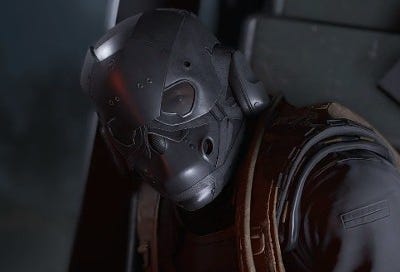Ghost Recon Breakpoint did 44 trades with $2,348 of NFT trading volume in Q1 2022
How not to do it
This is the weekly free email from GamesTX, the Substack about blockchain games. To get the full daily experience, please subscribe from $25/month. Thanks. jon
For all the headlines it generated, it’s very hard to position Ubisoft’s integration of NFTs into Ghost Recon Breakpoint as anything other than a failed experiment.
Actually, it’s probably better considered a disaster given the pushback generated compared to the utility created.
Maybe the news Ubisoft is officially ending support for the game (although the servers will remain on) will finally give the initiative some freedom to find its audience.
But this seems unlikely as no more NFTs will be released for the game.
In total, seven NFT types — guns and gear — were made available for players, with a total supply of 6,600, plus the caps made available specifically to the development team (now on sale for a floor price of $1.076).
Either way, a resurrection could only happen if Ubisoft gave up the onerous restrictions around who can buy and sell items.
If you want to trade the game’s NFTs (or Digits as Ubisoft called them), you have to fulfil certain conditions:
Play the game on Ubisoft Connect PC platform
Reach at least the XP Level 5 in the game
Have activated the 2-Factor Authentication for Ubisoft Connect
Be at least 18 years old
Be a resident of an eligible territory
And be located in an eligible territory
Some of these restrictions seem sensible, some likely due to legal worries, but forcing people to play a game in order to own and trade NFTs demonstrates a fundamental lack of understanding about why (some) people want to own NFTs.
NFTs allow non-players to become part of a game’s community, not least by providing liquidity to those players actually earning — and then selling — the NFTs.
For, why would players earning NFTs want to buy more NFTs when the NFTs don’t have any utility, rarity or randomness?
Small wonder that taking a dirty data dump from the game’s official marketplace on Rarible (dirty on exact dates, not on price or number of transactions), I counted 48 sales with a trading volume of $2,348 (767 Tezos) during 2022 to-date.
(In total, there have been 66 sales, but I only started tracking them in late December.)
In fatuous comparison, Cyberbrokers — a NFT project from one skilled artist and couple of smart blockchain game devs — generated over $7 million of trading value *yesterday*.
I guess it just goes to show that for nervous developers, blockchain games need to be fresh projects or — more significantly — if developers do believe in blockchain, they need to nail their colors to the mast and take the short term hit for long term success.
There appears to be no half-way house.
Funding news
1. Stockholm-based developer Goals has announced a $15 million seed round for its eponymous soccer game. The round was led by Northzone with participation from Cherry Ventures and Banana Capital and others, plus a bunch of angels ranging from Barcelona player Gerard Pique to Sorare CEO Nicolas Julia, Matthew Ball and Sky Mavis’ Aleksander Larsen.
My confusion about this announcement was that I’d already noted down a $19 million seed round during 2021 so I’m not sure why this one has taken so long to announce or where the missing $4 million is.
I’m guessing part of the delay was waiting for the shiny new website, which also reveals more details about the F2P game’s design, in which each user runs their own club as well as being an individual player, part of one team. Also all in-game players are unique and can be improved through training although they will age over time and eventually can be retired as legends.
Product news
2. Sky Mavis has announced it’s added five validators to Ronin’s infrastructure. Nansen, Delphi Digital, Stable Node, Animoca Brands, and Dialectic have joined DappRadar, Nonfungible and Sparq as external companies running nodes.
Infamously, only five of nine validators were previously required for consensus, leading to the hack of $550 million or $620 million-worth of tokens (depending on when you timed the hack) as four Sky Mavis nodes and the Axie DAO node were compromised.
Now eight of nine nodes are required, while more external infrastructure providers further improves security. And the price of the RON token is back over $2.
3. Previously know as the Crypto.com blockchain, Cronos has announced Cronos Play and its first integration with the ChainSafe Gaming SDK.
Launched in November 2021 and using the EVM-compatible Cosmos SDK, Cronos claims it’s already a top 10 blockchain in terms of total value locked, although the vast majority of this is DeFi activity. Crypto.com is a consumer-facing crypto mobile app, offering exchange, trading and staking opportunities, as well as a fiat-based credit card with neat cashback options.
The move into games with the launch of Cronos Play is new, however.





